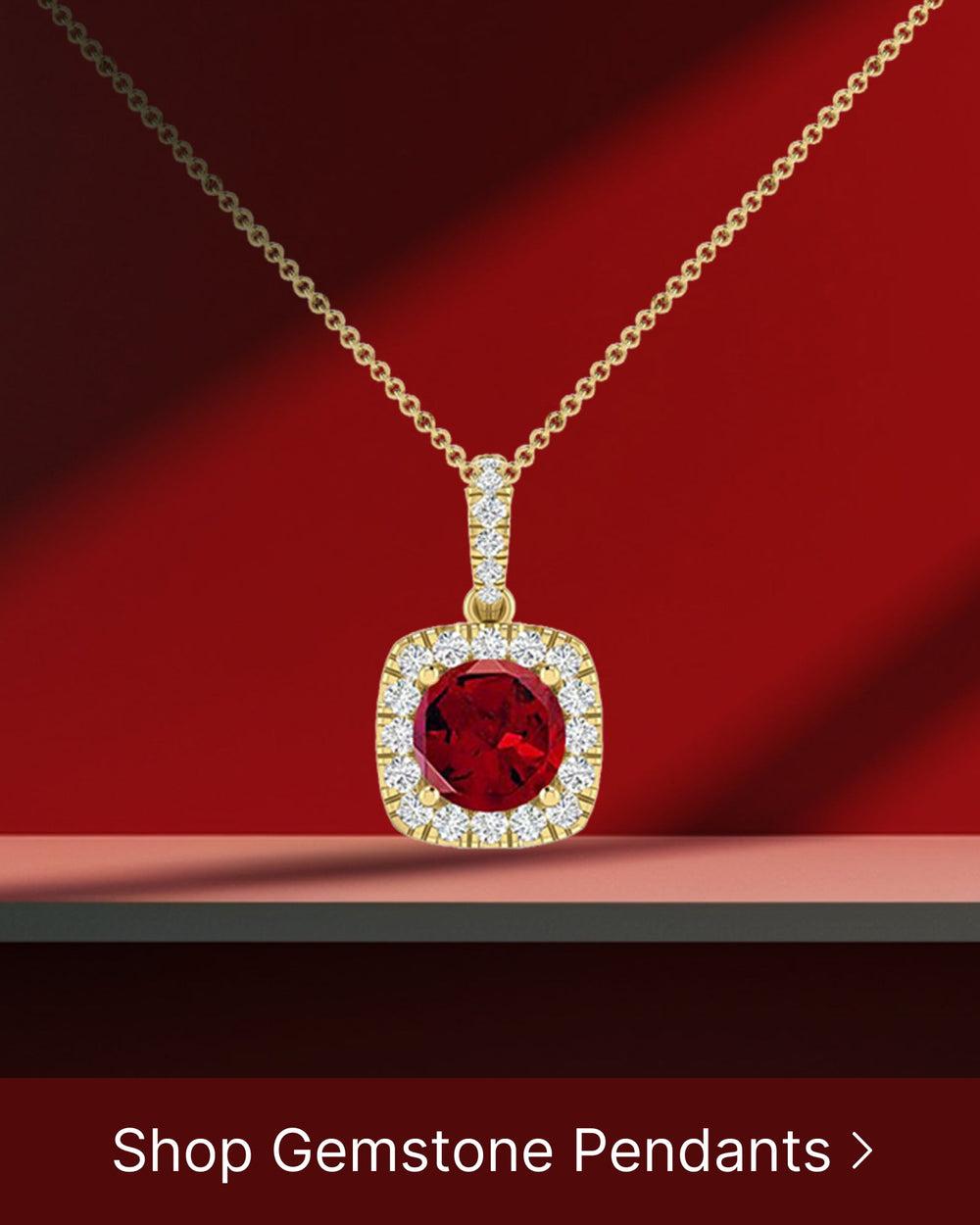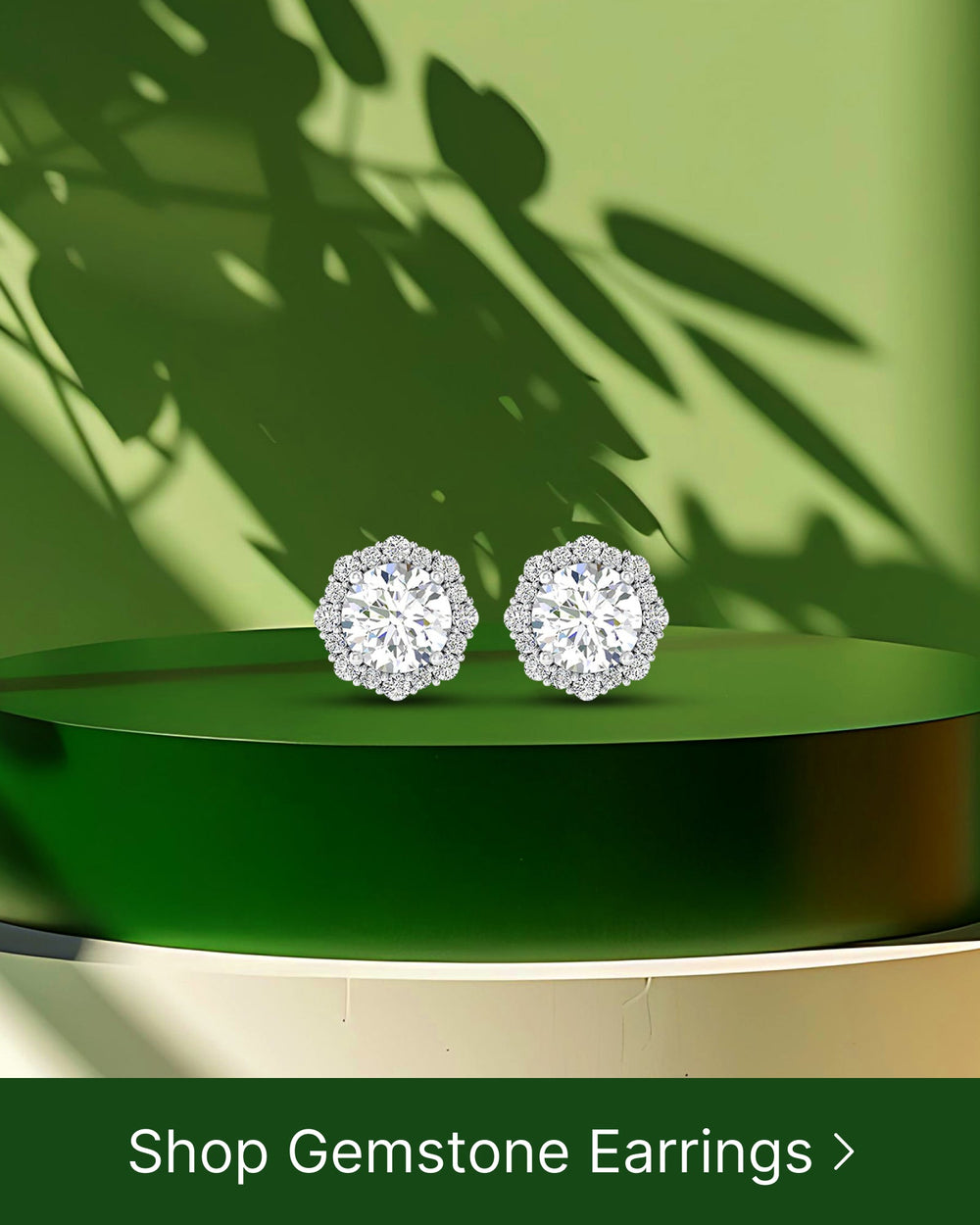Diamond carat size is an important factor when it comes to choosing the perfect diamond. Whether you're shopping for an engagement ring or simply looking to invest in a timeless piece of jewelry, understanding carat sizes and their impact is essential. In this article, we will delve into the basics of diamond carat sizes, explore the relationship between carat size and diamond value, discuss how to choose the right carat size for you, address common misconceptions about carat sizes, and examine the impact of diamond shape on perceived size. By the end of this article, you'll have a comprehensive understanding of diamond carat sizes and be well-equipped to make an informed decision.
The Basics of Diamond Carat Sizes
Carat weight refers to the size or mass of a diamond, with one carat equaling 200 milligrams or 0.2 grams. It's important to note that carat weight does not directly determine a diamond's size. Other factors, such as its cut, shape, and proportions, also play a significant role in how a diamond appears.
When visualizing carat sizes, it's helpful to know that larger diamonds are rarer and therefore command higher prices. However, the perceived size of a diamond can differ depending on its cut and how well it reflects light.
Let's delve deeper into the fascinating world of carat weight and explore its origins and significance in the diamond industry.
What is a Carat?
A carat is a unit of measurement used specifically for gemstones, including diamonds. It's a standardized metric weight, similar to how grams and kilograms are used to measure other substances. The term "carat" originated from the carob tree, as its seeds were used in ancient times to balance scales due to their consistent weight.
Today, carat weight is one of the "Four Cs" of diamond grading, alongside cut, color, and clarity. It's an important factor to consider when buying a diamond, as it affects both the appearance and the value of the stone.
Carat weight is a universal language in the diamond industry, allowing buyers and sellers to communicate the size of a diamond accurately. Whether you're a seasoned diamond enthusiast or a first-time buyer, understanding carat weight is essential in making an informed decision.
How Carat Size Affects Diamond Appearance
While carat weight does impact a diamond's overall appearance, it's not the sole determinant of its visual appeal. Two diamonds with the same carat weight can appear quite different depending on their cut quality. A well-cut diamond will have optimal proportions and angles, allowing it to reflect light in a way that maximizes its brilliance and sparkle.
When a diamond is poorly cut, light can leak out from the sides or bottom of the stone, resulting in a less impressive appearance. This means that even a large carat diamond can lose its sparkle if it's cut poorly. Therefore, it's crucial to consider both carat weight and cut quality when selecting a diamond.
Additionally, the shape of a diamond can also influence its perceived size. Different diamond shapes have varying surface areas, even if they have the same carat weight. For example, a round brilliant cut diamond will appear larger than an emerald cut diamond of the same carat weight due to the round shape's ability to distribute weight more efficiently.
It's important to strike a balance between carat weight and other factors such as cut, color, and clarity to find the perfect diamond that meets your preferences and budget. By understanding how carat weight interacts with these other elements, you can make a well-informed decision and choose a diamond that truly dazzles.
The Relationship Between Carat Size and Diamond Value
Carat size plays a significant role in determining the value of a diamond. Generally, larger diamonds are more valuable due to their rarity. As carat size increases, the price per carat also tends to increase exponentially. This is because larger diamonds are harder to find and require more rough material to cut.
When it comes to carat size and diamond value, there is a fascinating interplay between supply and demand. The allure of owning a larger diamond has created a strong market demand for these precious gems. As a result, the price of larger diamonds has soared, making them a symbol of luxury and prestige.
However, it's important to note that the relationship between carat size and diamond value is not always straightforward. The price of a diamond is not linearly proportional to its carat weight. For example, a two-carat diamond will cost more than two times the price of a one-carat diamond of similar quality. This is because larger diamonds are in higher demand and command a premium price. Supply and demand dynamics, as well as market sentiment, also influence diamond prices.
When evaluating the value of a diamond, it's crucial to consider not only its carat weight but also other factors that contribute to its overall beauty and desirability. Color, clarity, and cut quality are additional factors that impact a diamond's value. A diamond with a higher carat weight but poor color or clarity may not be as valuable as a smaller diamond with exceptional color and clarity.
How Carat Size Influences Price
Understanding how carat size influences diamond prices requires delving deeper into the complexities of the diamond market. The rarity of larger diamonds makes them highly sought after by collectors and investors alike. The limited supply of these gems, coupled with their desirability, drives up their price.
Moreover, the process of cutting larger diamonds requires more skill and precision, as well as a larger portion of rough material. This adds to the cost of production, further contributing to the higher price per carat for larger diamonds.
It's important to note that the price per carat for diamonds increases exponentially as carat size increases. This means that a two-carat diamond will not simply be twice the price of a one-carat diamond of similar quality. The larger the diamond, the more pronounced the increase in price per carat.
Carat Size and Diamond Quality
While carat size is undoubtedly an important consideration when selecting a diamond, it should not be the sole determining factor. Striking a balance between carat weight and diamond quality is crucial to ensure the overall beauty and value of the gem.
A high-quality diamond with excellent cut, color, and clarity will often appear more stunning than a larger diamond with inferior quality. The way a diamond interacts with light, known as its brilliance, is heavily influenced by its cut. A well-cut diamond will exhibit optimal fire and scintillation, enhancing its visual appeal.
Color and clarity are also vital factors to consider. Diamonds come in a range of colors, from colorless to various shades of yellow or brown. The presence of any internal or external flaws, known as inclusions and blemishes, respectively, can affect a diamond's clarity. A diamond with higher color and clarity grades will be more valuable, even if it has a smaller carat weight.
Ultimately, the decision to prioritize carat size or diamond quality depends on personal preferences and budget. Some individuals may prioritize a larger diamond for its visual impact, while others may value the brilliance and purity of a smaller, higher-quality diamond.
Choosing the Right Carat Size for You
When choosing a diamond, personal style, budget, and wearer preferences are crucial factors to consider. Ultimately, the right carat size for you will depend on your individual taste and requirements. Here are a few points to keep in mind when making your decision:
Considering Personal Style and Budget
Think about your personal style and the type of jewelry you typically wear. If you lean towards minimalistic and understated pieces, a smaller carat size might suit you best. On the other hand, if you prefer bold and eye-catching jewelry, a larger carat size could be more fitting.
It's also important to establish a budget before making your purchase. Evaluating what you're comfortable spending will help you narrow down your options and find a diamond that meets your financial constraints.
Understanding Size and Proportions
While carat size is often equated with diamond size, it's essential to consider a diamond's proportions as well. A well-cut diamond that maximizes light performance can appear larger and more vibrant than a poorly cut diamond of the same carat weight. Therefore, take into account the overall balance and symmetry of a diamond when assessing its visual presence.
Common Misconceptions About Diamond Carat Sizes
There are some prevalent misconceptions when it comes to diamond carat sizes. Let's debunk a couple of them:
Carat Size vs. Total Carat Weight
Carat size refers to the weight of a single diamond, while total carat weight refers to the combined weight of all the diamonds in a piece of jewelry. Sometimes, jewelry may feature multiple smaller diamonds whose total carat weight is equivalent to a larger single diamond. Understanding this distinction can help you make an informed decision when considering jewelry with multiple diamonds.
Busting Myths About Carat Size and Diamond Sparkle
Contrary to popular belief, carat size does not directly determine a diamond's sparkle. While larger diamonds may capture more light due to their size, a diamond's ability to sparkle depends more on its overall cut quality. A well-cut diamond will maximize its brilliance regardless of its carat weight.
The Impact of Diamond Shape on Carat Size
The shape of a diamond can significantly affect how large it appears. Different shapes have varying surface areas and depths, which can create the illusion of a larger or smaller diamond. Let's explore this further:
How Different Shapes Affect Perceived Size
Some diamond shapes, like the round brilliant cut, are known for their ability to maximize brilliance and sparkle. Due to their symmetrical nature, round diamonds tend to face-up larger and can create the illusion of a bigger size compared to other shapes.
On the other hand, elongated shapes, such as the marquise or pear, can appear larger than their carat weight suggests. These shapes tend to have larger surface areas, which make them seem more substantial. Consider the shape of the diamond when selecting a carat size to achieve your desired visual impact.
Choosing the Right Shape for Your Carat Size
When choosing a diamond shape, it's important to consider the carat size as well. Some diamond shapes may require higher carat sizes to achieve the desired visual impact. For example, a smaller carat round diamond may appear more substantial than a similar-sized fancy shaped diamond. Balance your preferences for shape and carat size to find the perfect combination for you.
Conclusion
In conclusion, understanding diamond carat sizes is vital when it comes to selecting the perfect diamond. While carat weight impacts a diamond's size and value, it's essential to consider the interplay between carat size and other factors, such as cut quality and diamond shape. By taking into account personal style, budget, and wearer preferences, you can make an informed decision when choosing the right carat size for you. Remember to consider the overall beauty of a diamond and strike a balance between carat weight and quality. Armed with this knowledge, you're ready to embark on your journey towards selecting the ideal diamond that truly captures your heart.





